Until the French Revolution, the custom prevailed in the Royal Abbey of St-Denys to celebrate the Octave Day of its patron St Dionysius on 16 October with a Mass where all the sung parts—the Ordinary, the Propers, and the Preface—were chanted in Greek. The text was translated from the Latin original and set to the same music. The parts said silently by the ministers, including the Canon, remained in Latin.

This Greek Mass was manifestly an expression of the tradition that St Dionysius, first bishop of Paris, was St Dionysius the Areopagite, the Greek disciple of St Paul, philosopher, and first bishop of Athens, who abdicated his Hellenic see to go evangelize Gaul with his companions SS. Eleutherius and Rusticus. However, this custom was only the longest-lived instance of an erstwhile more widespread practice of singing Roman Rite masses partly in Greek. Several mediæval manuscripts survive that contain the Ordinary of the Mass in Greek, written in Latin characters: Doxa en ipsistis Theo; Pisteuo eis ena Theon; Agios, Agios, Agios; and O amnos tu Theu. The fascinating question of the origin of these missae graecae has not been conclusively settled, as we hope to discuss in a future post.
Here we provide a translation of the introduction to an edition of the Greek Mass in honour of St Dionysius published in 1777. The author discusses the origin of the Greek Mass, as well as the practice among the monks of St Denys and elsewhere to receive Communion under both species, also a vestige of a once more common practice.
* * *
Messe Greque en l’honneur de S. Denys
selon l’usage de l’Abbaye de S. Denys
Three things demand some remark and explanation: first, the origin of this Greek Mass, and of the Prose[1]chanted therein; secondly, the Edition here provided; and thirdly, the custom of Communion under two species observed during this Mass.
- On the Origin of this Greek Mass and its Prose.
As the learned Dom Michel Félibien writes in his History of the Royal Abbey of Saint-Denys, the moment when this Mass in Greek began to be celebrated in the Abbey cannot be pinpointed exactly. This use seems to have arisen from the identification of St Dionysius the Areopagite with St Dionysius the first bishop of Paris. This opinion originated, according to some, or was accepted, according to others, from the time of Hilduin, Abbot of St-Denys around the year 826, when ambassadors from Constantinople presented Emperor Louis the Pious with certain works attributed to St Dionysius the Areopagite, wishing, perhaps, to thereby suggest to the French that the first bishop of Paris, venerated from that time as one of the main Apostles of the Gauls, was the Areopagite himself.
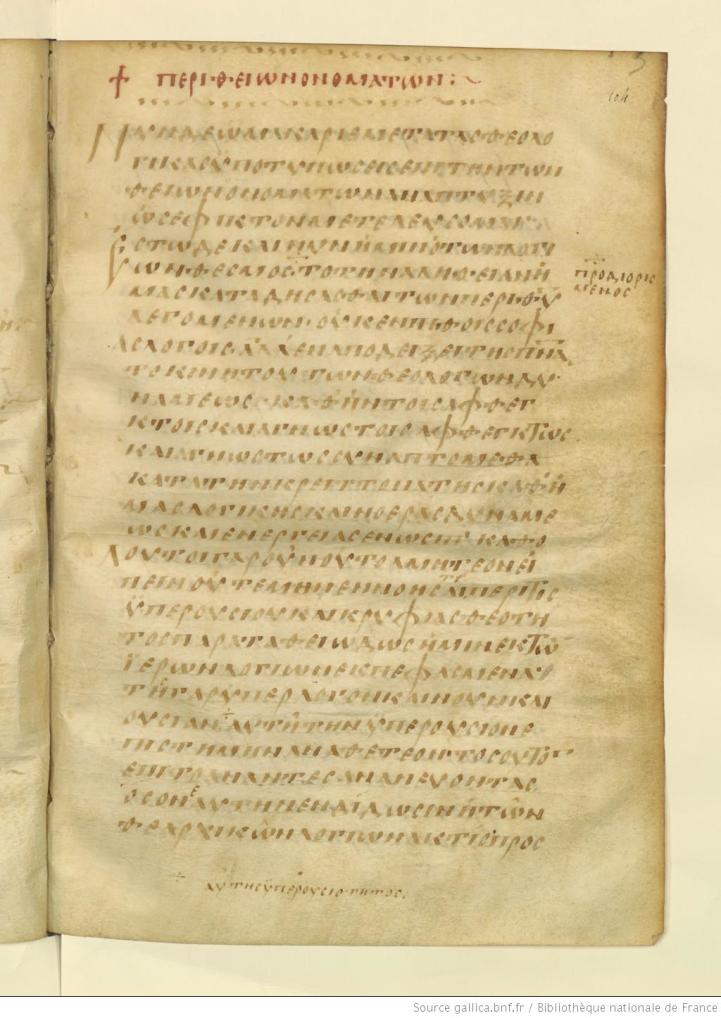
Huilduin believed it, and in his thanksgiving letter to Louis the Pious—who had ordered that these works be placed over the tomb of St Dionysius, to whom offered them—assured the Emperor that nineteen miracles had occured at the tomb of the holy martyr the very night the works were placed there. Around the year 835, then, Louis the Pious, attributing his recovery of the throne to the protection of St Dionysius, assigned Hilduin to write a life of this holy bishop, whose relics were kept in his monastery. Huildin, happy to enhance the glory of his abbey and honour its patron, gladly carried out the Emperor’s orders. He says that everything he writes is taken from Greek and Latin authors, from the works of St Dionysius, from his ancient Acts, and, inter alia, from two Masses and some hymns. Were these Masses in Greek or Latin? We do not have the answer, but, as his view that St Dionysius the Areopagite was the same as St Dionysius the first bishop of Paris was prevalent throughout France from the time of his writing until the 17th century, it is quite possible that the monks of this abbey took the occasion to celebrate this Greek Mass every year on the Octave Day of their holy patron. Hulduin died shortly after Louis the Pious, around 22 November 840.
But whatever the origin of this use, it is certain that it is ancient, for this Greek Mass in the Roman Rite, as it is sung today, is marked by a ceremonial over five hundred years old. Moreover, as it is certain that Charlemagne and Louis the Pious introduced the Roman Rite into France at the beginning of the 9th century, the origin of this Mass must lie between the 9th and 13th centuries.

When the Congregation of St Maur took over the Abbey of St-Denys in 1633, it did not think it needful to change its customs, and hence has continued to celebrate the Greek Mass, without presuming to enter into a debate about the three different views that the scholars hold about St Dionysius. Some, like Hilduin, assert that St Dionysius, the first bishop of Paris, was the same as St Dionysius the Areopagite, first bishop of Athens. Others believe, following the Acts of the Martyrdom of St Dionysius, which are recognized as predating Hilduin, that another St Dionysius, different from the Areopagite, was sent to the Gauls by Pope St Clement. The third party holds, following Sulpicius Severus, that the faith did not reach the Gauls until the second century, and, following St Gregory of Tours, that St Dionysius was one of those sent to the Gauls in the middle of the third century. But ALL ARE AGREED in honouring St Dionysius as the first bishop of Paris.
The monks of St Dionysius have preserved the ancient Mass as it was handed down to them by their predecessors.
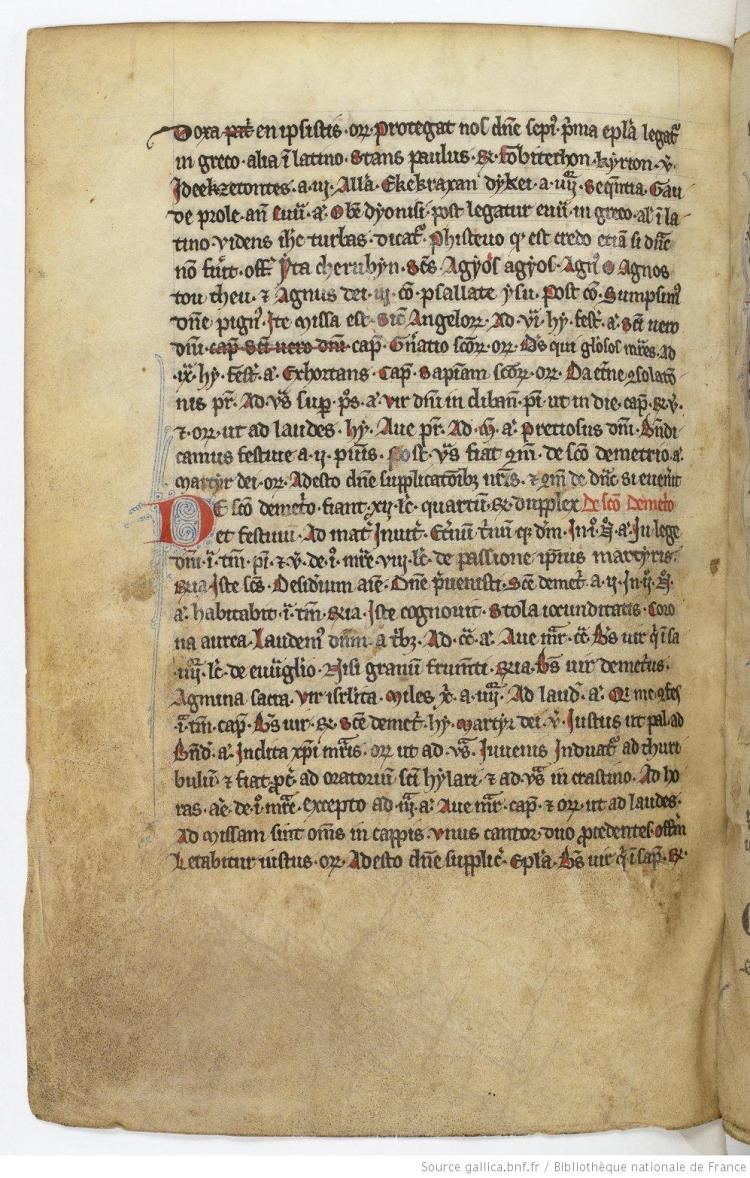
And so one should hardly be surprised to find in this Mass an Epistle taken from the Acts of the Apostles that makes reference to St Dionysius the Areopagite, and in the Prose, the martyrdom of St Dionysius is placed during the rule of the Emperor Domitian, whose persecution began in the year 95, and ended with his death in 96. It is remarkable that this Prose certainly supposes that St Dionysius came from Greece, as is clearly enough shown by his name, but does not say that he was the same as the Areopagite. The Greek Prose is simply a translation of the Latin Prose, and the Latin Prose or Sequence might have been written by King Robert, son of Hugh Capet, who died in 1031. It is essentially the same as the one sung in the diocese of Paris; only a few stanzas have been changed in the last few centuries. The chant is also essentially the same, with only minor differences.
François de Harlay, Archbishop of Paris († 1695), after having consulted the theological faculty of Paris about the reform of the Parisian breviary, decided that this breviary would follow the ancient tradition of the Gallican church about the identity of St Dionysius the Areopagite and St Dionysius bishop of Paris.
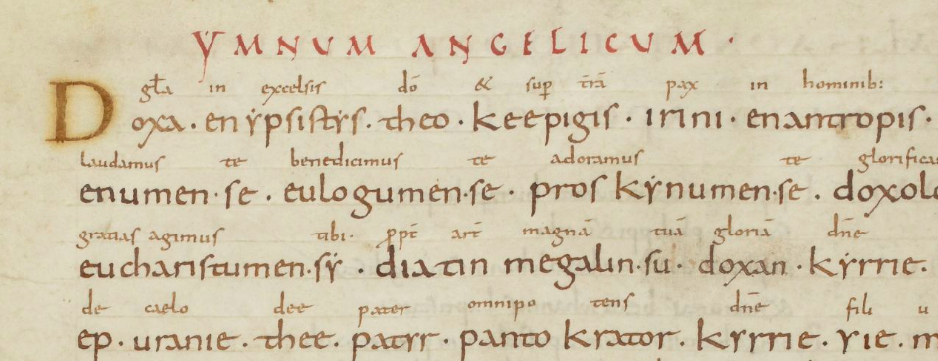
[…]
- About Communion under Two Species
Most people who attend the main Mass in the Abbey of St.-Denys on Sundays and feasts pay no heed to something that might prove edifying to their piety, and remind them of one of the most respectable customs of the early Church: viz., that the celebrant, deacon, and subdeacon receive communion under both species.
Immediately after the Kiss of Peace, which those in choir give one another during the Agnus Dei, the deacon goes up to the left of the celebrant, while the subdeacon betakes himself to the credence to pick up an empty chalice and a golden reed (chalumeau; Latin calamus, fistula) which he takes to the altar at the celebrant’s right.
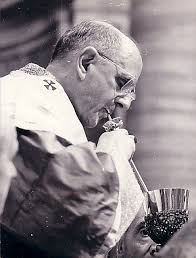
While the celebrant receives the Body of Our Lord under the species of bread, these two ministers bow profoundly and say the Confiteor. Then, the subdeacon present the golden reed to the celebrant, who uses it to drink part of the Precious Blood of Jesus Christ in the large chalice by sipping it.[2] At this moment, all those in choir come together beneath the altar steps, with the deacon and subdeacon above them, and make a profound genuflection.
The celebrant, after having taken part of the Precious Blood, gets up and the deacon takes the chalice with one hand and the reed with the other. He remains beside the altar for an instant to give the celebrant time to adore the Saviour’s Blood. Then, the deacon and subdeacon, to the former’s left, go together to the Altar of Communion, preceded by part of the clerics in choir. This Altar stands against a pillar of the sanctuary, on the Gospel side. Here, the deacon, after having put down the chalice and reed in the hands of the subdeacon, goes back to genuflect before the middle of the high altar, where he receives Communion from the hands of the celebrant under the species of bread, as usual. He then comes down, genuflects again, and returns to the small altar. When he arrives, he again adores Our Lord and takes the reed from the hands of the subdeacon, with the end of which he takes the particle that the celebrant placed there after the fraction of the host. He takes it up to his mouth and swallows it, and then takes portion of the Precious Blood by sipping it.

Meanwhile, the sub-deacon does the same thing. He leaves the little altar after having adored the Saviour’s Blood and goes to the base of the high altar to make a genuflection, climbs the steps, receives Communion from the hands of the celebrant, and returns to take the rest of the Precious Blood with the reed which the Deacon gives to him.
This done, the deacon pours wine into the chalice for the ablution, drinks a portion of it with the reed, and ascends the altar to change the celebrant’s book to the other side. The subdeacon, after having taken his own part of the ablution, takes the chalice and carries it to the altar, where he purifies it along with the one used by the celebrant for his particular ablutions, then carries everything back to the credence.
On Maundy Thursday, although all the religious of the community communicate at the High Mass under the species of bread, a Communion under two species is made nevertheless by the deacon and subdeacon immediately before the general communion.
On the opening day of the general Diet that takes place at St-Denys every three years with a Solemn Mass of the Holy Spirit, on the Second Sunday after Easter, the ministers at the altar are members of this assembly. Nevertheless the deacon and subdeacon commune under the two species because they are monks of the same body of a single Congregation, which justifies the same privilege.
This ceremony, or rather this communion under two species, which appears to be a privilege and which is today effectively a very singular prerogative, is nothing more than the ancient custom of many churches of France.
Our Holy Father the Pope, in Masses at which he celebrates, gives the deacon and subdeacon communion not with two individual hosts but from half of the large host he consecrates at Mass, of which he puts a portion in the chalice after the fraction. Thus the pope communicates with only half of the host and then takes a portion of the Precious Blood with the reed. Thereafter, having divided the half of the host already eaten into into two parts, he gives one to the deacon, who takes with the end of the reed the part the Pope has left in the chalice. Then he takes a portion of the Precious Blood. The Pope thereupon gives the other part of the large host to the subdeacon, to whom the deacon gives the reed that he might take the rest of the Precious Blood. The deacon then puts a bit of wine into the chalice for the ablution, of which he takes a portion and the subdeacon the other.
The Lord Bishop of Chartres has informed us that on Maundy Thursday, he receives communion with the deacon and subdeacon under both species, with the difference that the bishop himself consumes the portion of the host he put into the chalice.
In the Abbey of Cluny, communion is received under both species on all Sundays and all Major and Minor Solemnities, which are called Feasts of the First and Second Order in the Congregation of St Maur.
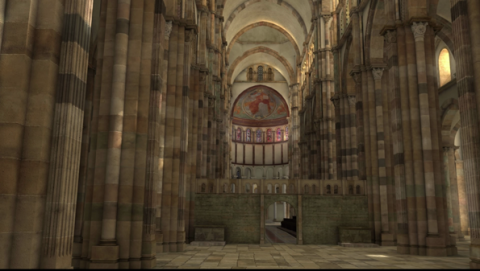
Before Mass, the Sacristan prepares a credence on the Gospel side. He covers it with a very clean cloth, two candlesticks with their candles, a cross in the middle, and a chalice to give the ablution to those who received communion under the species of bread and wine, who use a reed given to them for this purpose during communion.
The deacon always performs this ceremony. After consuming the large host, the celebrant drinks a bit of the Precious Blood with the particle that is in the chalice. He then goes to the epistle side to make way for the deacon, who takes the chalice, takes it to the credence that has been prepared, upon which lies a corporal and a purificator. The two acolytes accompany him with their candlesticks on hand.
After the due inclinations and genuflexions, the deacon remains on his knees next to the credence, while the celebrant gives communion to the subdeacon (if he is not a priest) and to the two acolytes, professed monks who are called assistants.
The subdeacon and these two acolyte assistants then go to the small altar or credence and there receive communion under the species of wine by means of the reed. The deacon gives this reed to the subdeacon, putting it between his fingers, and then to the two others.
When all three of them have partaken of the Precious Blood, the deacon takes the chalice, in which there is still wine left, and carries it to the high altar accompanied as before by the acolytes with their candles. The celebrant consumes the remaining wine. Then the necessary ablutions take place, for the celebrant as well as for those who have communicated under two species.
This communion is not done under two species at Cluny at the great masses in commemoration of the dead, as it in at St-Denys.
The deacon who serves at the altar on the days of this communion is always a priest and he does not take part in it. It is his duty to keep the chalice on the credence and present the reed to the three communicants.
On the opening day of the General Chapter at Cluny, a ceremony is performed in the church which is considered a vestige of venerable antiquity. At the offertory, each of the capitulars goes up bearing a small bread to be consecrated for communion. They put it upon a paten held by the Lord Abbot General, kissing his ring and the paten. During communion, all the capitulars go up to the altar to receive the species they have offered, but they do not receive communion under the species of wine, except for the two acolytes assistants, as mentioned above.
This communion is a remnant of the ancient practice of many churches, which since the holy Council of Trent has become the precious prerogative of those churches that have preserved it. Indeed, the in records of this Council, collected by M. Dupuy, one finds that the ambassadors of the King of France pointed out to the Council legates that, if anything would be changed in what had been planned in the 21st session, it should be without prejudice to the prerogative of the Kings of France, who received communion under both species on the day of their Coronation and Anointing, and to the ancient custom of certain Monasteries of the Realm where the monks who were not yet priests also communicated under both species on certain days of the year. Although the Abbey of St-Denys was not mentioned specifically, it is certain that it was included in the ambassadors’ Instruction, as was the Abbey of Cluny. To-day, only these two monasteries have retained communion under both species, not by special privilege, as many suppose, but by uninterrupted practice in these two churches during the Solemn Mass of Sundays and the main feasts of the year.

[1]Prose (prosa) is the usual Gallican term for a Sequence (sequentia).
[2]Akin to the fistula, the reed used by the Pope to receive the Precious Blood in Papal Mass.
3 thoughts on “The Greek Mass of St-Denys”